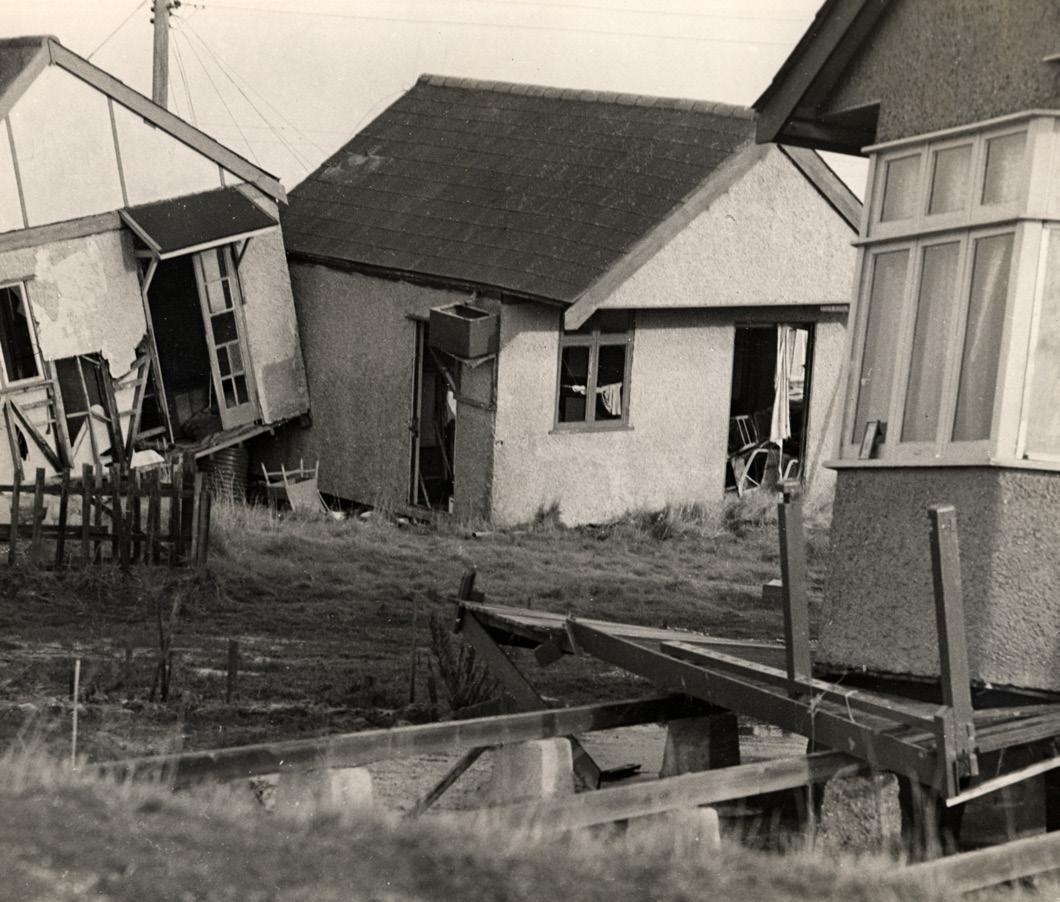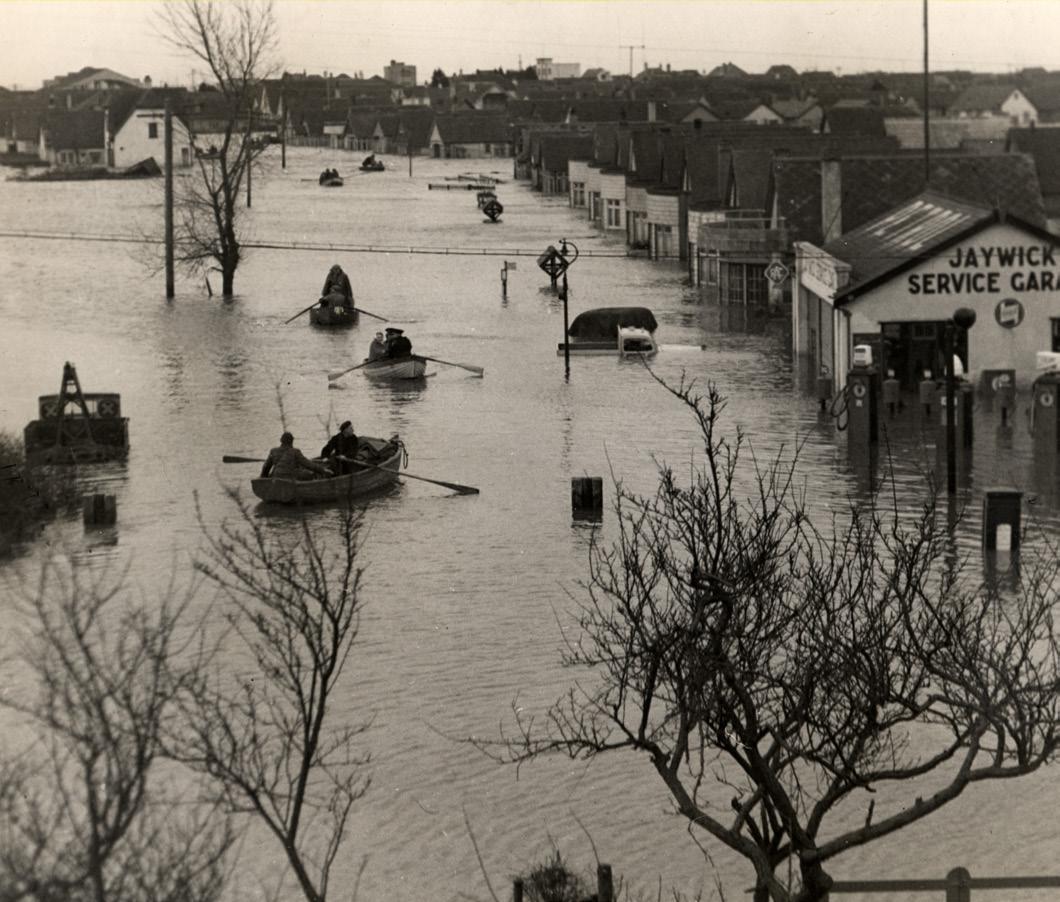
2 minute read
Commemorating the North Sea Flood of 1953

“With its miles of saltmarsh, mud filled creeks and shingle beaches, Essex has always had a close relationship with the sea. From oyster fishermen at Burnham to barge skippers at Maldon, from boat builders at Wivenhoe to leisure boat captains at Southend, many Essex people have drawn a living from it, while countless others have drawn pleasure.” their homes, leaving possessions.
This year marks the 70th anniversary of the severe storm, coupled with a high spring tide, which led many to describe The Great Flood of 1953 as the worst natural disaster in Great Britain in the 20th century. In fact, the scale was unprecedented.
On the night of Saturday 31 January, a huge tidal surge caused devastation along the east coast of Britain by washing away sea walls and leaving coastal defences battered and broken. Over 300 lives were lost and 40,000 people were made homeless. In the Netherlands, the government announced that 1,835 people had died due to the floods, while another 28 people died in Belgium after sea defences suffered heavy damage.
A combination of wind, high tide, and low pressure caused the sea to flood the land up to almost six metres above sea level. Most sea defences facing the surge were overwhelmed, which led to the extensive flooding.
As a low-lying county, Essex was particularly affected, with flooding from Harwich to Tilbury. During that fateful night, over 300 sea defences were breached, and 30,000 acres – many of which was valuable farmland – were flooded with salt water. Overnight, communities along the coastline were submerged.
While the whole county suffered, the areas hit hardest were Canvey
Island, which saw the tidal surge claim the lives of 58 people and left 11,000 out of the island’s 11,500 people unable to return to their homes. Along the coast, Jaywick was also devasted. Over 35 people perished and 600 of Jaywick’s remaining population of 700 were left homeless.
In the aftermath, the government of the day invested heavily in new sea defences and further flood defence measures were instigated along the country’s coastline, many of which are still in use today.
To mark the 70th anniversary, commemorative events recently took place in Canvey Island, with a new plaque unveiled at Canvey Library. The library also hosted exhibitions from Canvey Community Archive and the Essex Record Office, featuring photographs, maps and accounts of survivors, so that the public could learn more about the event that shaped the island’s history.
Further commemorative events have also taken place at Harwich Museum and Jaywick Martello Tower, where visitors could see the ‘Tides of Tendring’ exhibition, which focused on how the floods of 1953 affected Jaywick and the surrounding coastal areas.
Also, in commemoration the book ‘The Great Tide’, written and researched by Hilda Grieve, then Senior Assistant Archivist at the Essex Record Office, has been re-published. ‘The Great Tide’ was commissioned by Essex County Council shortly after the flood, with the intention of documenting the “complete story” of the disaster.
Copies of ‘The Great Tide’ are available to purchase for £20 from the Essex Record Office or £25 with postage. For details on how to order your copy email ero.searchroom@essex.gov.uk You can find out more about ‘The Great Tide’ and listen to archive recordings about the 1953 flood with the Essex Record Office blog: www.essexrecordofficeblog.co.uk
If you missed the events commemorating The 70th anniversary of the Great Flood you can learn more in a short documentary featuring survivors of the flood in Essex.
Ray Howard MBE, provides vivid descriptions of the devastation, whilst Malcolm MacGregor shares his heroic story of how he acted to save others in his community.
Watch it at: www.youtube.com/ watch?v=P7jW1lImygs

